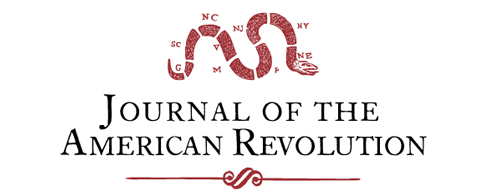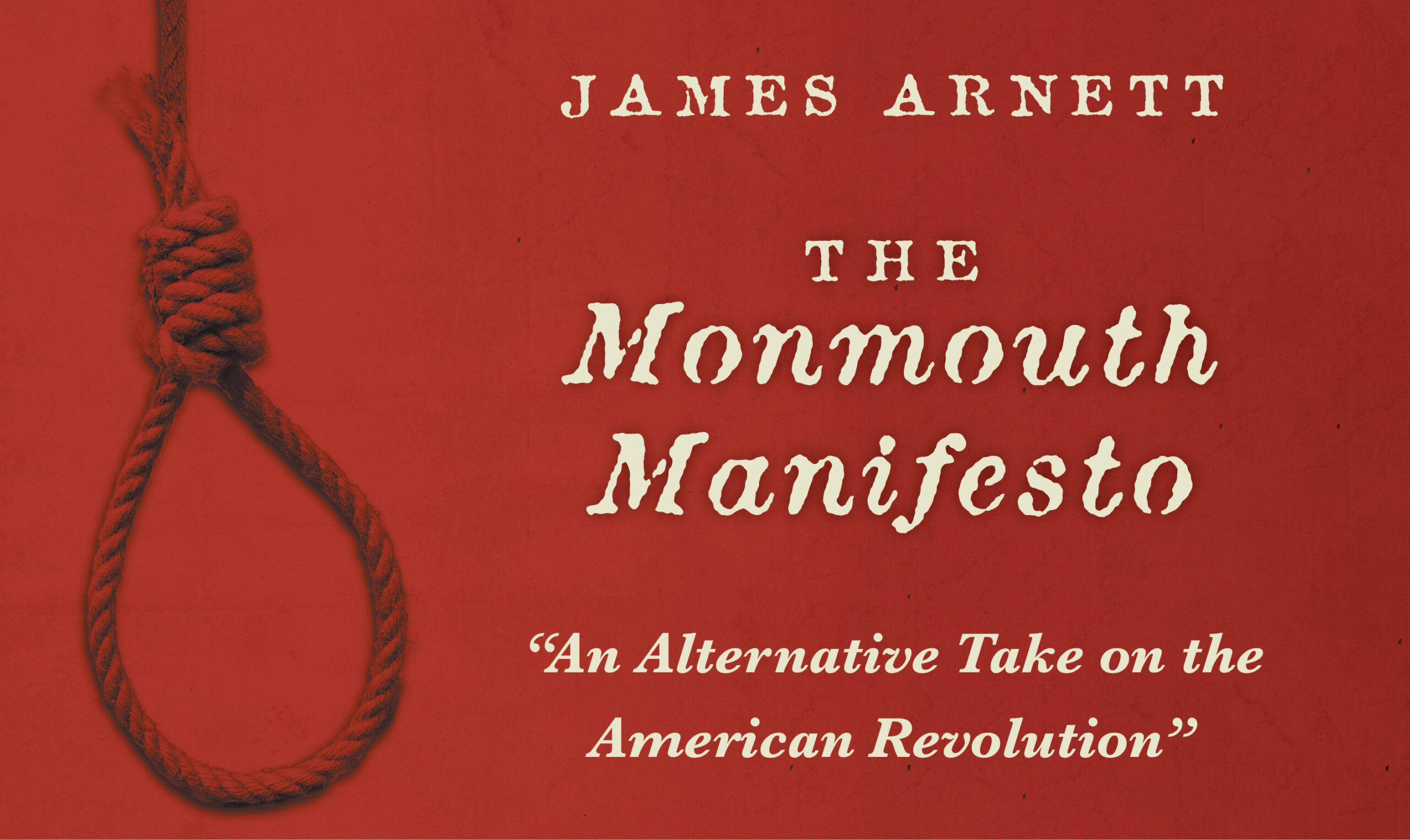In the fall of 1776, Patriots were desperate for ways to defend the Hudson River from British attacks, entertaining even the wildest ideas. Henry Wisner, a member of the Continental Congress from Goshen, suggested revolutionary soldiers hurl stones at approaching ships from the cliffs north of Peekskill. “Ten men on the top,” he claimed, “might prevent ten thousand passing.”[1] John Jay imagined an even more ambitious solution: using hydraulic engineering to shallow the river to allow only small vessels through. Jay believed that eight to ten thousand soldiers could excavate the Hudson Highlands and deposit the mountains in the river to impede British advances.[2] While Jay’s plan never came to fruition, the Continental Army ultimately engineered a different obstruction—a 600-yard, sixty-five-ton iron chain stretched across a bend in the river at West Point—that prevented navigation through the Highlands.

For both Patriots and Loyalists, controlling the natural world had military and political value. Environmental relationships shaped strategies and public perception. Since each side claimed the land, they hoped to project a sense of environmental mastery to bolster those claims. The chain at West Point was more than a defensive work; historians have noted that it was also a symbol of Patriot environmental dominance that showcased their engineering prowess and knowledge of the Hudson Highlands.[3] Beyond the chain, however, Patriots’ efforts to command nature in the Highlands Department were continually tested. Try as they might to project mastery, the soldiers of the Continental Army were at the mercy of weather, resources, and the land itself.
Throughout the war, Patriots stationed near West Point wrestled with a series of nagging and daunting environmental challenges. The harsh realities of the Highlands landscape often undermined their claims to environmental supremacy. Managing draft animals and livestock was a constant challenge. Continentals struggled to erect fortresses and provision the troops in face of the wind, deep freezes, and drought. Steep and punishing terrain fatigued soldiers ordered to carry messages and provisions over the mountains. Forests posed major obstacles to communication and cutting them down proved exhausting and deadly. In the Highlands, Patriots confronted the limits of their power over non-human nature.
The Hudson Highlands were sparsely populated at the beginning of the Revolutionary War. William Alexander, Lord Stirling advised Patriot officials that the army would struggle to locate shelter near West Point. The rocky Highlands, he cautioned George Washington, were “inaccessible to anything but goats.”[4] Revolutionaries prepared for a variety of military threats in the Highlands. The mighty Royal Navy might sail upriver from New York City. Crown troops could march through the region’s gaps and small valleys. West of the mountains, farming families wrote with alarm about raids by British-allied Native auxiliaries.[5] In addition to these multifaceted dangers, Patriot leadership confronted a harsh landscape that unsettled the rank and file.
Continental soldiers found the remote Hudson Highlands alien and bewildering. In the summer of 1776, 1st Lt. Samuel Smith of the 4th Pennsylvania Infantry Battalion craned his neck to view Thunder Hill (Crow’s Nest) and Butter Hill (Storm King Mountain) as the Pennsylvanians sailed through the “narrow Pass” at West Point. “The Land on Both sides of the River from the entrance of the highlands,” Smith recorded, was “Verry mountainous.”[6] Joseph Feddeman, a matross from New England, beseeched Henry Knox to relieve the soldiers from their post “in the Desert Woods” of the Highlands. According to Feddemann, the regiment could not locate “any Milk Nor any Such thing to . . . Nurrish A Poor Soldier” in this “wilderness and Montagies Land.”[7] The remote and dangerous Hudson Highlands disturbed Feddeman and his fellow enlisted men so much so that they took the bold step of writing to their superior officer demanding relief. Environmental factors challenged not only the Patriots’ ability to militarize the Highlands but also their psychological sense of belonging and control.
Accommodating and monitoring draft animals and livestock were constant sources of frustration for the Continental Army in the Highlands. In 1775, the engineer Bernard Romans demanded oxen to construct earthworks on Constitution Island, and New York officials balked. The commissioners appointed to supervise Romans thought that the engineer’s request “may be just,” but chided Romans for the time and money he spent constructing a road to ease the path for animals. Such work was unnecessary, the commissioners insisted, where men and animals were unavoidably “to be worked hard amongst rocks.”[8] Not long after this exchange of letters, the Continental Congress dismissed Romans from service.[9] In 1779, John Campbell, a Patriot supply agent, wrote to a friend from Otter Creek near the Highlands about his frustrations with country living and his noisy and troublesome animal roommates.
This morning a damn’d whiffet which slept at the foot of my bed with the children made such a cursed yelling that I was Oblig’d to rise and repair to my stove . . . About a dozen chickens—and five or six old fowls—are now parading about my store—I can’t keep them out—have been up two or three times cursing and Schewing them about—but they mind me but little—this moment one jump’d on the bench, beside the hogs too are running in and out . . . two cows this moment run in at the door, and were halfway through before I could stop them . . . God Damn all I must quit.[10]
Although eighteenth-century peoples’ daily lives involved close cooperation with animals, the war required an even greater dependence on animal labor. That deeper intimacy frustrated some Patriots.
As their military presence in the Highlands increased, so did the army’s inability to control the environment. And of all their environmental challenges, Continentals wrote about none more frequently than supervising livestock. Revolutionaries blamed thieves and illicit traders for the soldiers’ frequent want for meat. “We are informed that four persons,” a report in the New-York Packet read, “inhabitants of Newburgh, Ulster county, have lately been detected in villainously secreting and selling Continental cattle.”[11] The animals themselves presented more regular issues. Livestock often roamed beyond Patriot supervision. Cattle and sheep could be put to pasture in the woods but required protection from wild animals such as bears and coyotes as well as enemy poachers.[12] Officers also wavered on whether to allow forage-guzzling animals to remain in camp or not. The artillerist John Crane complained in 1781 that forage restrictions afforded his unit only one horse. He wrote that removing teams from camp “obliges me to make horses of men, as we are obliged to draw all our timber by hand, and all our Charcole the space of four miles.”[13] As the Continental Army transformed the remote Hudson Highlands into their military headquarters, their environmental frustrations mounted.
In every season, the weather created problems. Runoff from the steep and rocky terrain sometimes flooded lodgings. While encamped “under the Grand mountains . . . at Haverstraw Bay,” Loammi Baldwin of Massachusetts reported that a flood came “down the mountains & ran in torrents among & through our tents & allmost washd them away.”[14] Drought, on the other hand, impeded locals’ ability to produce wood planks and flour. In November 1779, after a summer of low rainfall, the commissary general reduced Highlands’ soldiers flour rations “owing to the uncommon drought which has stopped most of the Mills.”[15] Punishing winters brought north winds, snow, ice, and overall misery. “Since the day of my birth have I felt nor seen such compliate Distress and weather as Experienced this week past,” Col. Sebastian Bauman wrote at the end of 1779. “For it seems as if the Elements had formed a combination against us.—The earth is impenetrable.—Fire has forsaken us.—Water has cease[d] to run.”[16]
Bauman’s complaint regarding the conspiracy of the elements had some merit. Earth, water, air, and fire all battered soldiers in the Highlands Department. The brackish Hudson could not provide clean drinking water; soldiers had to locate creeks and springs or dig wells. When enlisted men encamped alongside springs, their refuse and waste compromised the health of the water source.[17] Although engineers applauded how the fierce winds at West Point slowed the approach of enemy ships, gusts also made the post vulnerable to fire. In a 1780 letter to Knox, Bauman reported that the barrack at West Point “stands to the windward” and that because “the wind Blows most generally down the river at this time of year,” the risk of fire increased.[18] Military preparedness and environmental factors increased fire hazards. During the dry and hot summer of 1782, an artillery position at West Point burned when the trees surrounding the redoubt caught flame.[19]
The Highlands’ steep topography also frustrated engineers and officers. In November 1779, Bauman claimed that he could not install cannons atop Fort Putnam because the season was “too far advanced” which rendered “the ground already soft, and the mountains too slippery for the Transporting of heavy cannons.”[20] To move between redoubts, obtain provisions, or gather timber, soldiers regularly had to climb over the Highlands. Sometimes enlisted men had to be incentivized to make the arduous journey. When officers in the 8th Massachusetts Regiment received word that a delivery of peas had arrived in New Windsor, they encouraged soldiers to hike over Butter Hill by promising extra rations to parties who completed the trek.[21] The rugged slopes of the Highlands demanded soldiers exert and expend more energy than other encampment sites.
In the surrounding forests, woodcutters toiled and encountered frequent danger. Hauling the timber up and down the Highlands’ slopes wearied the troops. Bauman noted soldiers’ “continual fatigue” of “carrying of Wood, both for themselves and officers, upon their shoulders for miles.”[22] Others could be injured or killed by falling trees. One Connecticut soldier noted in his diary that a colonel “was riding along, [and] some men was falling a tree nigh the rode which fall on him and killd him & his Horse di[e]d on the Spot.”[23] Thick forests also helped facilitate desertion. “Many Soldiers,” an orderly book explained, “often straggle into the woods . . . to avoyd being detected.”[24] Numerous caves, swamps, and hideouts in the Highlands aided deserters. One local resident recalled a “Very secluded . . . cave called the Rock House” where “several deserted and live there some time.”[25] Isolated mountain refuges enticed Continental soldiers to abandon camp, weakening the strength of the military in this strategically vital region.
In the Hudson Highlands, no amount of engineering could fully overcome the constant challenges posed by animals, weather, rugged terrain, and dense woods. The wartime transformation of the Highlands, moreover, from a remote area to the military headquarters of the Continental Army made its ecological communities and natural features even harder to manage. While Patriots tried to project confidence and mastery over the land, these obstacles revealed the limits of their control. Beyond the logistical and material challenges, the army’s interactions with their natural surroundings shaped soldiers’ daily experiences as well as the broader political struggle. The environment influenced military operations, but it also affected each side’s ability to win hearts and minds. The land was more than a backdrop to the Revolution; it was central to its outcome.
[1] Peter Force, ed., American Archives (Washington, D.C., 1848–1853), 5(ser.):2(vol.):1123.
[2] John Jay to Robert Morris, October 6, 1776, The Papers of John Jay, Columbia Digital Library Collections, Columbia University Libraries.
[3] Edward Manning Ruttenber, the nineteenth-century historian of the Hudson Valley, first compiled the records of the Great Chain. Ruttenber presented Patriots as conquerors over nature by romantically describing the Hudson River and the Continental Army’s multiple efforts to impede its navigation. See Ruttenber, Obstructions to the Navigation of Hudson’s River (Albany: J. Munsell, 1860), 1–17. Over a century later, two other historians examined the Continental Army’s Hudson River defenses in earnest. While these historians did not glorify these efforts in the same way, both nonetheless paid exclusive attention to the environmental challenges that mattered to the river obstructions. Their accounts of the chain rarely examine the broader difficulties of accommodating and provisioning troops in the rugged and remote Highlands. See Dave Richard Palmer, The River and the Rock: The History of Fortress West Point, 1775-1783, 2nd edition (West Point, NY: Hippocrene Books, 1991); Lincoln Diamant, Chaining the Hudson: The Fight for the River in the American Revolution (New York: Fordham University Press, 1994).
[4] See Force, ed., American Archives, 4:4:184, 4:6:672–74; quote on 4:6:672.
[5] For examples, see Journals of the provincial congress, provincial convention, committee of safety and council of safety of the state of New-York: 1775-1777, 2 vols. (Albany, 1842), 1:1042–43. On Native attacks in the Hudson Valley, see Barbara Graymont, The Iroquois in the American Revolution (Syracuse: Syracuse University Press, 1972), 180, 199–201.
[6] Orderly book kept by First Lieutenant Samuel Smith, dated from June 11 to September 22, 1776, Society of the Cincinnati, Washington, DC.
[7] Joseph Feddeman to Henry Knox, May 26, 1776, Henry Knox Papers, Vol. 2, Massachusetts Historical Society, Boston, MA.
[8] Force, ed., American Archives, 4:3:1355–1362.
[9] Lincoln Diamant has written the most thorough examination of Romans’s dismissal from Continental service. According to Diamant, in 1775 Romans clashed with civilian leaders over where to position the principal bastion on the Hudson River and the fortresses design. Diamant, however, did not consider his fight with New York legislators over animal labor as part of that saga. See Diamant, Chaining the Hudson, chap. 1.
[10] John Campbell to Minnie Voorhees, June 27, 1779, Minne Voorhees letterbook, 1776-1812, William L. Clements Library, University of Michigan, Ann Arbor, MI.
[11] The New-York Packet, January 4, 1781.
[12] For pasturing livestock in the Highlands woods, see entry dated June 29, 1780, 8th Massachusetts Regiment Orderly Book, West Point and later Tappan (NY), June 1- August 9, 1780, II.1.D, Revolutionary War Orderly Books, Massachusetts Historical Society (MHS).
[13] John Crane to Heath, December 7, 1781, reel 22B, Heath Papers, MHS.
[14] Loammi Baldwin to Mary Fowle Baldwin, December 19–21, 1776, Loammi Baldwin Papers, 1768-1872 (MS Am 1811), Houghton Library, Harvard University.
[15] Entry dated November 11, 1779, 8th Massachusetts Regiment Orderly Book, West Point, September 13, 1779-January 31, 1780, II.1.C, Revolutionary War Orderly Books, MHS.
[16] Sebastian Bauman to Henry Knox, December 30, 1779, Sebastian Bauman Papers, New-York Historical Society (NYHS), New York.
[17] Entry dated September 12, 1781, 10th Massachusetts Regiment Orderly Book kept by Christopher Marshall, Peekskill, September 1781–February 1782, United States Military Academy (USMA) Library Archives and Special Collections, West Point, NY.
[18] Bauman to Knox, January 23, 1780, Bauman Papers, NYHS.
[19] John Paterson to Heath, July 23, 1782, reel 25B, Heath Papers, MHS.
[20] Bauman to Knox, November 27, 1779, Bauman Papers, NYHS.
[21] Entry dated January 9, 1780, 8th Massachusetts Regiment Orderly Book, MHS.
[22] Bauman to unknown recipient, December 12, 1779, Bauman Papers, NYHS.
[23] Entry dated February 11, 1782, John Hutchinson Buell, Revolutionary war diary by an officer of the First Connecticut Continental Line, June 6, 1780 to January 14, 1784, MSS L2013F229, Society of the Cincinnati, Washington, DC.
[24] Entry dated April 11, 1778, Orderly Book of Bailey’s Regiment and the 2nd Mass. Regiment, USMA.
[25] Frederick Post, interviewed October 24, 1846, William McDonald Papers, 3:423-24, Westchester Historical Society, Elmsford, NY.







Recent Articles
That Audacious Paper: Jonathan Lind and Thomas Hutchinson Answer the Declaration of Independence
Supplying the Means: The Role of Robert Morris in the Yorktown Campaign
Revolution Road! JAR and Trucking Radio Legend Dave Nemo
Recent Comments
"Eleven Patriot Company Commanders..."
Was William Harris of Culpeper in the Battle of Great Bridge?
"The House at Penny..."
This is very interesting, Katie. I wasn't aware of any skirmishes in...
"Texas and the American..."
Mr. Villarreal I would like to talk to you about Tejanos who...